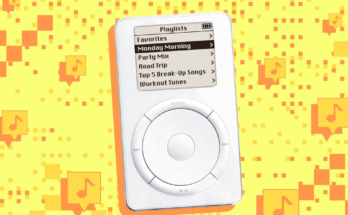Spatial audio and the rest
If you prefer a more “natural” sound to your headphones, AirPods Max offers just that. Apple’s adaptive EQ does a lot of work, but it’s not heavy handed. While some will prefer the more bass-forward acoustics of the WH-1000XM3 and others, I quite like what the company has done here. It fits more genres than most headphones, and the natural profile allows finer details and open, airy sound to shine.
Don’t get me wrong, there’s plenty of low-end tone when you need it. Purity Ring’s remix of Deftones’ “Knife Prty” is a great example of this. Bass is a big component of the overall soundstage, but it’s not overbearing. You get the boom, but you also get the subtle atmospherics. The same goes for the thumping drum machines of Com Truise’s In Decay, Too and the droning guitars and bass on O’Brother’s You and I. The AirPods Max are best at keeping the sound big and open, and that holds true with softer acoustic styles like bluegrass, too.
Despite how good they sound, Apple doesn’t offer any access to high-res streaming. From Apple Music, you get the same AAC (256kbps) you’ve been listening to there. The service doesn’t have a high-res or lossless tier like Amazon Music or Tidal. Those pricier services can be limited too, but they unlock things like Dolby Atmos Music and Sony 360 Reality audio. Sony offers LDAC wireless technology on its headphones that upscales audio to CD quality. Apple could do something like that with the AirPods Max if it doesn’t want to add more content, and a more expensive subscription, to its service. That’s if these headphones are capable of it, of course. For now though, these new headphones have some untapped potential when it comes to high-res music. You can certainly use them for those services and formats, but officially the AirPods Max only supports Dolby Atmos when it comes to anything beyond standard listening.
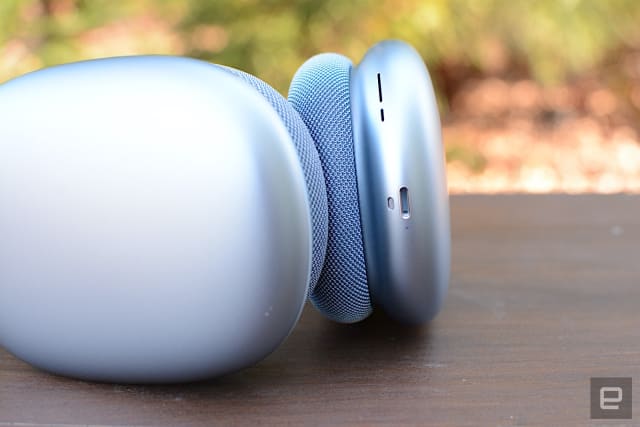
Billy Steele/Engadget
Apple debuted spatial audio on the AirPods Pro in September and, unsurprisingly, you’ll also find it on the AirPods Max. Basically, accelerometers in the headphones work with your iPhone or iPad to track head movement to keep the sound stationary while you move about. It’s meant to mimic the experience of a home theater for content recorded in 5.1, 7.1 and Dolby Atmos. However, it only works with Apple’s mobile devices right now. AirPods Max can be used with Apple TV, but spatial audio isn’t available on the set-top box, so the sound will only be so good. If the company can manage a level of immersive audio that Dolby creates with its Dimension headphones, the AirPods Max would be a compelling living room addition.
Another infuriating thing about the AirPods Max is Apple doesn’t include a 3.5mm cable in the box. Of course, the headphones don’t have a 3.5mm jack so you have to use one with a Lighting connection on the other end. Which means you’ll have to shell out another $35. So to use the AirPods Max for in-flight entertainment (whenever you fly again), you’ll need to spend $584. Most of the competition includes a cable in the box, and if I pay nearly $550 for a set of headphones I expect to be able to use them when travelling — one of the times I need noise-cancelling the most.
Speaking of noise cancellation, the AirPods Max do a great job of blocking out the world. ANC headphones generally do better with constant sounds, and that’s true here, too. They don’t do well countering things like Zoom calls, which I could still hear with these on. I don’t think the noise-cancelling performance is quite as good as Bose and Sony, but it’s not far off. What’s more, the transparency mode on the AirPods Max is excellent. With music paused and that feature active, it’s almost like not wearing headphones. Usually sounds are somewhat muffled in transparency mode. That’s not the case here, and it’s wonderful. I never felt the need to speak louder, or yell, when having a quick conversation.
Battery life and low-power mode(s)
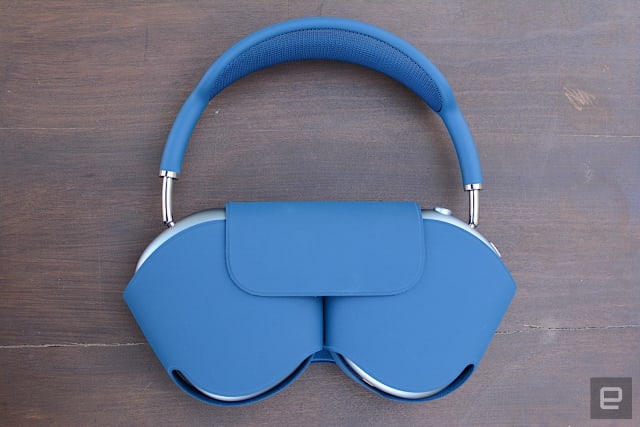
Billy Steele/Engadget
In terms of battery life, Apple says you can expect up to 20 hours on a charge. That’s with ANC and spatial audio enabled. Indeed, I had no trouble hitting that mark. I used the AirPods Max for one or two hours a day for well over a week before I needed to charge. That’s mostly because of the low-power modes the company employs.
Since there’s no power button, the headphones don’t turn off unless the battery is completely drained. When inactive for five minutes, they enter a low-power mode. If you leave them for 72 hours outside of the case, they’ll go into a “lower power mode” that disables Bluetooth and Find My. If you put the AirPods Max in the case, the low-power mode is activated immediately. After 18 hours there, the headphones enter that “lower power mode.” The difference between in and out of the case battery conservation is pretty negligible unless you’re leaving the headphones alone for a prolonged period. Over the course of a two- or three-hour break, putting the AirPods Max in the case immediately only saved me one or two percent over leaving them out.
It sounds complicated, but the results are clear. This feature truly helps save battery life. And since the headphones are always on, they’re connected and ready to use by the time you get them on your head. Nixing the power button is a very Apple thing to do, and at times I wanted to just turn them off and know they were off. But at the same time, it was nice to simply pick them up and get going. Apple is clearly prioritizing connectivity and convenience here.
There’s also a quick-charge feature that will give you an hour and a half of listening time in five minutes. So if you really get in a pinch, you’ve got that at your disposal.
The (less expensive) competition
At $549, there’s no denying the AirPods Max are expensive. Call it an “Apple tax” if you want, but the truth is the company has succeeded in building a set of high-end wireless headphones. Now, are they a good option for most people? Not by a long shot. But when companies like Master & Dynamic are selling well-designed noise-cancelling headphones for $499, Apple isn’t that far off. Supply seems to be a bit of an issue as Apple is showing ship dates in mid-February at the time of this writing. Other retailers, like Best Buy, have the AirPods Max periodically go out of stock. Right now though, they’re available there.
I really like Master & Dynamic’s MW65 ($499) as an AirPods Max alternative. Some will even prefer M&D’s design which uses premium materials like aluminum and leather. The MW65 also sound very natural and avoid any heavy-handed tuning. Plus, you can find these for around $400 right now, saving you around $150 over the AirPods Max.
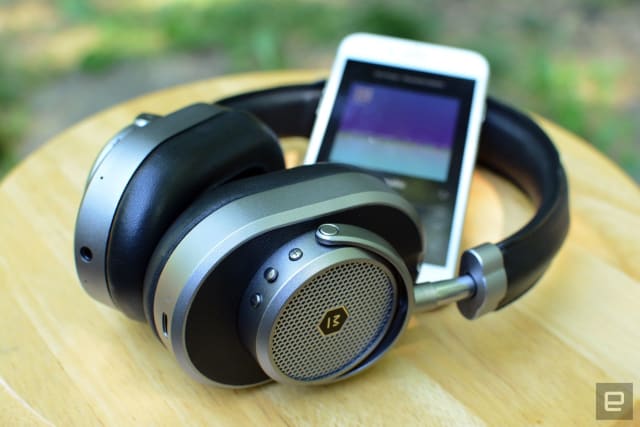
Billy Steele/Engadget
Of course, the best all-around headphones are still Sony’s WH-1000XM4. There’s more bass on these than the AirPod Max, plus you have full control over the audio and the ANC. If you want them to, the 1000XM4 will also automatically adjust noise cancellation and more based on your activity or location (you have to give the app permission to track you for the latter). The bottom line is Sony’s mix of sound, ANC performance, battery life (30 hours), comfort and customization is very hard to beat. And I haven’t even mentioned the fact that these are $200 less than the AirPods Max at full price. Right now, you can find them for $278.
Lastly, the Bose 700 is one more option if noise cancelling performance is your primary concern. The company was the top choice for ANC headphones for years before Sony debuted its 1000X line. It may not be the king any more, but it hasn’t lost a step. The 700 is a comfy set of headphones with great noise-cancelling abilities and respectable sound quality. Plus, they have an updated design that’s much less of a “dad on a business trip” vibe. They’re $339 right now, though we’ve seen them as low as $299 recently.
Wrap-up
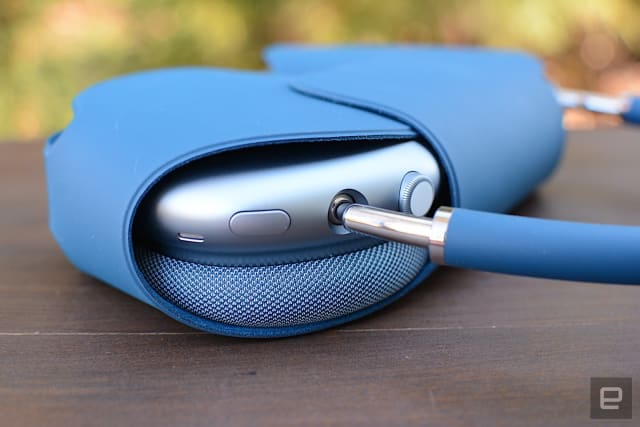
Billy Steele/Engadget
With the AirPods Max, Apple successfully built a set of premium over-ear headphones with a unique design that’s all its own. There’s no doubt they look much better than the mostly plastic options I typically test from Sony, Bose and others thanks to a mix of aluminum, fabric, mesh and Cupertino aesthetics. The company has also brought the best parts of AirPods to noise-cancelling headphones, including spatial audio and easy access to Siri. Right now, spatial audio is limited to iPhone and iPad, plus there’s no high-res music streaming. If the company can fully integrate these headphones with the Apple TV, and perhaps open them up to immersive sounds of Dolby Atmos Music or Sony 360 Reality Audio (or add them to its own service), there would be a better case for these. But at $549, Apple needs to check all the boxes to make the AirPods Max a must-buy. And even then, the price will still be prohibitive.



